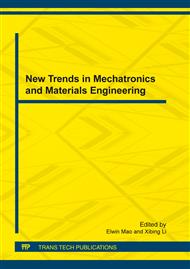[1]
Forrest S., Hofmeyr S.A., Somayaji A., Longstaff T.A. A sense of self for UNIX processes, Proceedings of the 1996 IEEE Symposium on Security and Privacy, 1996, 120-128.
DOI: 10.1109/secpri.1996.502675
Google Scholar
[2]
Lee W,Stolfo S J. Data mining approaches for intrusion detection[C]. Proc of the 7th USENIX Security Symp. San Antonio:USENIX,1998:6-9.
Google Scholar
[3]
Lane T. Hidden Markov models for human/computer interface modeling[C]. Proc of the International AI Society. Proc of the IJCAI- 99 Workshop on Learning about Users. Stockholm:International AI Society,1999:35- 44.
Google Scholar
[4]
Sekar R,Bendre M,Dhurjati D,et al. A fast automaton–based method for detecting anomalous program behaviors[C]/IEEE Computer Society. Oakland:IEEE,2000:144-155.
DOI: 10.1109/secpri.2001.924295
Google Scholar
[5]
Ghosh AK, Schwartzbard A, A study in using neural networks for anomaly and misuse detection, Proceedings of USENIX security symposium, 1999, 51-62.
Google Scholar
[6]
Zhang C L, Jiang J, Mohamed K. Intrusion detection using hierar-chical neural networks[J]. Pattern Recognition Letters,2005,26(6): 779- 791.
Google Scholar
[7]
Han S J, Cho S B. Evolutionary neural networks for anomaly detection based on the behavior of a program[J]. IEEE Transactions on Systems, Man, and Cybernetics-Part B: Cybernetics 2006, 36(3): 559- 570.
DOI: 10.1109/tsmcb.2005.860136
Google Scholar
[8]
R. Agrawal, and R. Srikant. Fast algorithms for mining association rules. In Proc. 1994 Int. Conf. Very Large Databases(VLDB'94), Sep. (1994).
Google Scholar
[9]
J. Han,J. Pei, and Y. Yin. Mining. Frequent patterns without candidate generation. In Proc. 2000 ACM-SIGMOD Int. Conf. Management of Data (SIGMOD'00), p. pp.1-12, May (2000).
DOI: 10.1145/335191.335372
Google Scholar
[10]
M. Zaki, S. Parthasarathy, M. Ogihara, and W. Li. New Algorithms for Fast Discovery of Association Rules. Proc. 3rd Int. Conf. on Knowledge Discovery and Data Mining (KDD'97, Newport Beach, CA), 283–296. AAAI Press, Menlo Park, CA, USA (1997).
DOI: 10.1007/978-1-4615-5669-5_1
Google Scholar
[11]
Christian Borgelt. Keeping Things Simple: Finding Frequent Item Sets by Recursive Elimination Workshop Open Source Data Mining Software (OSDM'05, Chicago, IL), 66-70. ACM Press, New York, NY, USA (2005).
DOI: 10.1145/1133905.1133914
Google Scholar
[12]
http: /www. almaden. ibm. com/cs/projects/iis/hdb/Projects/data_mining/datasets/syndata. html.
Google Scholar
[13]
http/www. cs. unm. edu/~immsec/systemcalls. htm.
Google Scholar


